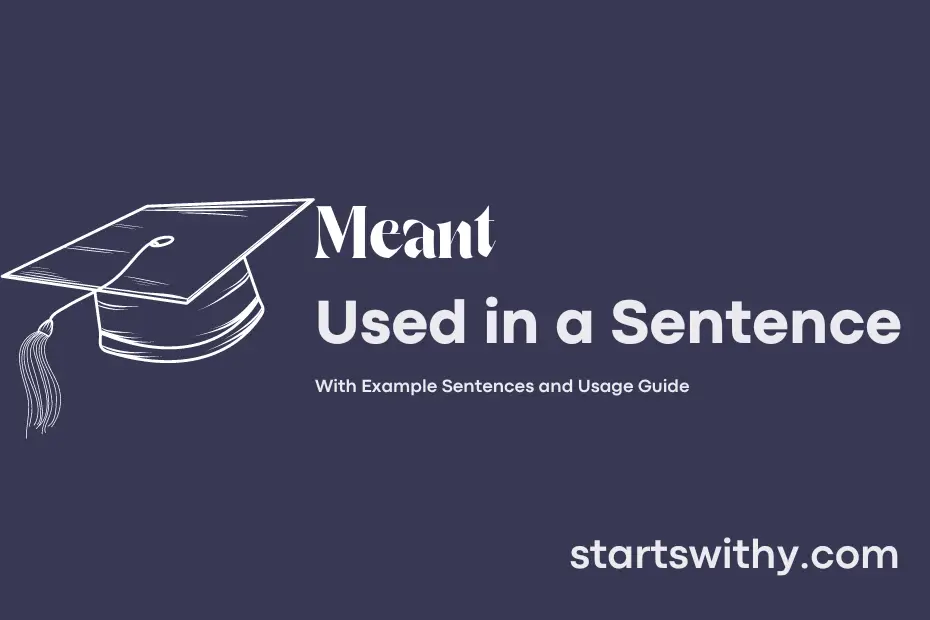Have you ever felt confused about the meaning behind a certain word or phrase? Understanding the intended message behind language is crucial for effective communication.
The word “meant” is a verb that is commonly used to indicate the intention or purpose behind an action or statement. It helps provide clarity by showing what was intended to be conveyed or achieved.
7 Examples Of Meant Used In a Sentence For Kids
- I meant to say thank you for helping me.
- The crayons were meant for you to color with.
- The message was meant for your teacher to read.
- The toy car is meant for you to play with.
- The storybook is meant for us to read together.
- The puzzle pieces are meant to fit together perfectly.
- The snack was meant for us to share.
14 Sentences with Meant Examples
- Meant for the library, but ended up studying in the cafeteria with friends.
- The deadline was meant for tomorrow, but I finished my assignment early.
- I meant to attend the lecture, but overslept.
- This textbook is meant for the upcoming exam preparation.
- The professor’s feedback was meant to help us improve our writing skills.
- Group discussions are meant to enhance our communication and teamwork skills.
- The college event was meant to bring students together from different departments.
- The study group was meant to review the key concepts before the final exam.
- This internship is meant to provide real-world experience in my field of study.
- Networking events are meant to connect students with professionals in the industry.
- Taking breaks between study sessions is meant to improve focus and productivity.
- The guest lecture was meant to expose us to new ideas and perspectives.
- The extracurricular activities are meant to develop leadership and time management skills.
- Classroom discussions are meant to encourage critical thinking and participation.
How To Use Meant in Sentences?
To use the word Meant in a sentence, you must understand its basic definition and grammatical usage. Meant is the past tense and past participle form of the verb “mean” which is used to indicate intention or significance.
When constructing a sentence with meant, you generally use it to convey the idea of purpose, intention, or a specific understanding. For example, “I meant to call you yesterday” implies that there was an intention to call but it did not happen.
To incorporate meant into a sentence, follow this structure: Subject + past tense of “to be” (was/were) + meant + to + [action or intention]. For instance, “She meant to finish her assignment before the deadline.”
Remember that meant can also be used in other contexts, such as to explain the significance of something. For instance, “The painting meant a lot to her as it reminded her of her childhood.”
In summary, when using meant, keep in mind its past tense form and consider whether it fits in the context of intention or significance. By incorporating this word correctly in your sentences, you can effectively communicate your thoughts and convey a specific meaning with clarity.
Conclusion
In conclusion, the sentences provided with the keyword “meant” illustrate the intended purpose or significance behind various statements. Each example conveys a specific message or interpretation, showing how “meant” is used to communicate intentions, meanings, or explanations within sentences. From expressing regret over misunderstandings to clarifying intentions or purposes, the diversity of sentences with “meant” highlights its versatile role in conveying underlying meanings.
Through these sentences, it is evident that “meant” plays a crucial role in shaping communication by adding depth and clarity to the messages being conveyed. By understanding the context in which “meant” is used, individuals can better grasp the intentions behind statements and engage in effective and meaningful conversations with others.



